A husband or a degree? India’s teenage girls struggle with urban aspirations
Roula Khalaf, Editor of the FT, selects her favourite stories in this weekly newsletter.
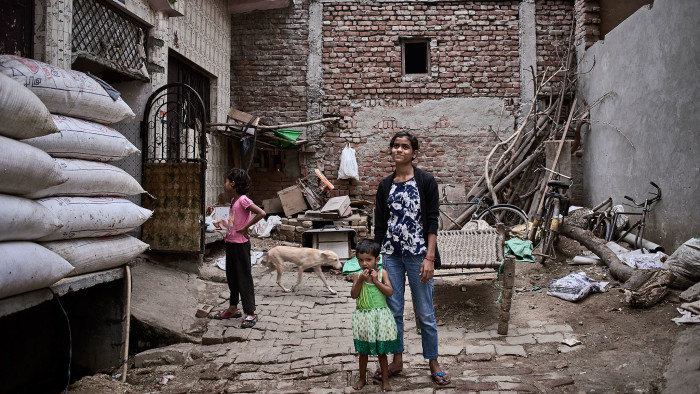
They met in the eighth grade, at a government school in north-east Delhi, not far from where all the girls lived: Aafreen Ansari, a slip of a girl with mischief in her eyes; Jyoti, sweet and shy; and Bushra Rajput, the eldest of the gang and the ringleader, whose family had moved to the city from their village more than a decade before.
In no time, they were inseparable. They insisted on sitting together on a school bench meant for two, with Aafreen wedged in the middle. Aafreen brought in a lipstick that they applied when their teacher wasn’t watching. When Bushra came in wearing heavy kajal eyeliner, Jyoti laughed and said she looked like a witch. They shared their lunches and planned their futures: Aafreen and Jyoti were thinking about becoming teachers and Bushra wanted to be a doctor.
This July, near the end of the summer holidays after 10th grade, Aafreen, who is now 17, went to the school to register for classes for the next year. Waiting for the results of her 10th class board examination had been stressful — she knew she would drop out of school if she didn’t pass. But she did, just, and made it into the lowest section of the arts stream. At school she saw Jyoti, now 16, and asked her to which section she was assigned.
“Section A,” Jyoti, a more diligent student, replied.
“What did Bushra get?” asked Aafreen.
“She’s getting married,” Jyoti said.
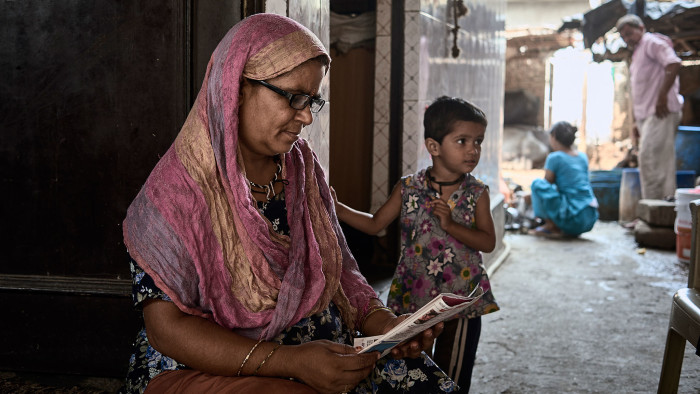
India has quietly been through an education revolution within a generation: families stream in from villages to the cities and girls in rural and urban areas alike are pouring into school. Programmes such as the Sarva Shiksha Abhiyan, a central government scheme aimed at achieving universal elementary education, combined with families’ rising aspirations, have contributed to this shift.
Urbanisation has been seen as a catalyst for this kind of progress. As families move to cities like Delhi, a greater number of educational options allow them to send children of both sexes to school for longer, although many families still choose to educate their boys privately and send their girls to state-run schools.
Indian government data show that the gap in enrolment between boys and girls has narrowed dramatically in recent years, with gains seen at all levels. In 2013, at the higher secondary level (11th and 12th grades), the gross enrolment ratio — the ratio of students enrolled to the number of eligible students in that age group — was 51.58 per cent for girls, compared with 52.77 per cent for boys. Just two years later, those margins had been reversed: 56.41 per cent of eligible girls were enrolled, compared with 55.95 per cent of boys.
But the numbers obscure a more complex reality for girls in school, particularly at the higher levels. A web of pressures threaten to dislodge their education at any time. Higher secondary level is a paradoxical time of unprecedented freedom and looming obligation for young women. Girls like Aafreen and Jyoti may be able to go to tutoring classes with boys, share their dreams with each other and play with make-up at school, but they are also aware of the imminent certainty of marriage — and the curbs on freedom that come with it.
“Families in the low-income communities continue to insist on education as an instrument for marrying the girls off. Marriage remains the primary obsession,” says Ravi Verma, the New Delhi-based Asia director of the International Center for Research on Women, which conducted a pilot employability programme in four city schools beginning in 2014.
Of the girls the organisation profiled in Delhi, 40 per cent dropped out between ninth-10th grade and 11th-12th grade, partly because of poor performance in mandatory exams, a phenomenon that also affects boys. But, Verma says, many girls were pulled out because they were “waiting for marriage”.
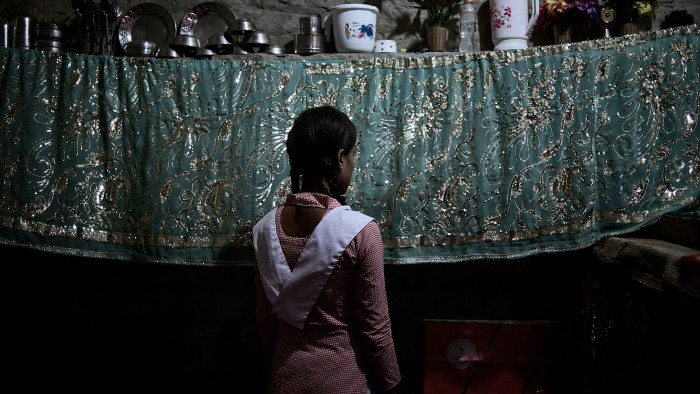
A revamped version of the programme began this year. This time the organisation has expanded it to target parents, community leaders, potential employers and male schoolmates — an apparent nod to the fact that girls’ futures rest in large part on external factors. Still, it is crucial, says Verma, to get through to girls in their secondary school years while their paths can still be altered. “The aspirations have to change at that stage, otherwise it’s too late,” she says.
Jyoti had told Aafreen that Bushra, who is now 18, was getting married and moving to a village in the hill state of Uttarakhand close to some relatives but, by late August, that move had not yet happened.
Sitting in her cramped, two-storey home, on a back lane of a shabby, predominantly Muslim neighbourhood, Bushra swings between buoyant optimism and grave misgivings about the future. The optimism seems to stem from the alternative prospect of married life in the city. Her mother, she says, is now also talking to the family of a mechanic in New Delhi who has four brothers. If the match works out, she could live with him in the city and would not have to move to the village. Bushra believes, at times, that her new husband and his family would allow her to continue with school.
“There’s a girl in my lane who’s married and studying in college,” she says. “I believe I will study further. The family they are talking to now seems open-minded.”
But then she thinks of a 17-year-old cousin who recently got married in a village near the one her mother plans to move to in Uttarakhand, and of her instant transformation. “She has to take permission for each thing. She has to think 100 times if she can go somewhere,” says Bushra. “She wears bangles and anklets and toe rings — she looks so old now.”
Sometimes, as she completes simple household tasks such as making tea for her brothers and mother, Bushra thinks about what a life of chores would be like in her new home. “I’ll be locked inside four walls,” she says.
Urban India is all Bushra has known for much of her life. When she was five, her Muslim family fled their village in the populous and poverty-stricken northern state of Uttar Pradesh, where her father farmed rice and wheat on a sizeable plot of land. Her eldest brother became entangled in a property dispute and the situation was tense. He was accused of murder and the family sold some land and bought a plot in their current neighbourhood, on the border of Uttar Pradesh and Delhi, in the suburbs of the city. “It was a jungle then,” Bushra recalls. Now it is a bustling residential district of cramped, often half-finished, brick homes.
Five years ago, Bushra’s brother was convicted in the murder case, with three others, and is now in prison. Three years later, her father collapsed as he was going downstairs after his morning tea. He was taken to hospital, paralysed on his left side. Two days later he died.
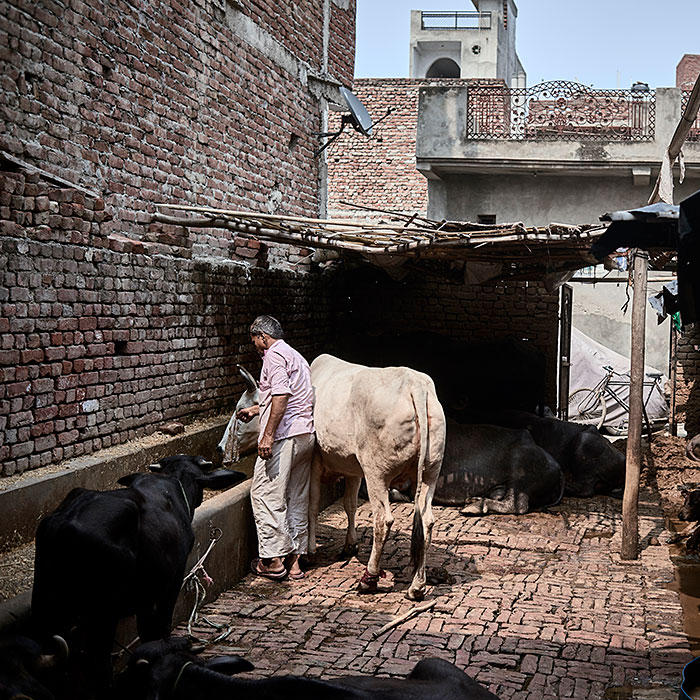
Bushra thinks her future lies in the city with the handsome mechanic, whose photo she has saved on her phone. She reckons she will be married, along with her elder sister, by the end of the year. If not, she shrugs, she will go to the village with her mother, a trade-off that she would not completely regret.
“In the village, you can talk to anybody. Everyone is your brother,” she says. In her city neighbourhood, on the other hand, the boys are all from another caste and she thinks they are uncouth. Their oppressive stares force her to retreat indoors — a world dominated by sewing, chores and childcare.
With her husband dead, one son in jail and another scarcely older than Bushra, Ankul Nisha, Bushra’s mother, sees no other option for her daughter. “It’s just the situation,” she says. “If her father were alive she would have been educated.”
Early marriage is one of several factors blamed for the low numbers of women in India’s workforce. In 2011-12, just 27 per cent of Indian women over 15 were either working or looking for a job, a decline from 37 per cent in 2004-05, making India among the countries with the lowest rates of female workers. Paradoxically, even as more and more girls go to school, fewer women are entering the workforce.
Perhaps an indication of progress can be seen, if not in Bushra’s future, then in her small social universe’s condemnation of it. Aafreen was shocked when she heard about her friend’s plan to get married and spent an hour at school while Bushra was cancelling her registration trying to talk her out of it. “I couldn’t believe she was getting married. She had said she wanted to make something of her life,” Aafreen says.
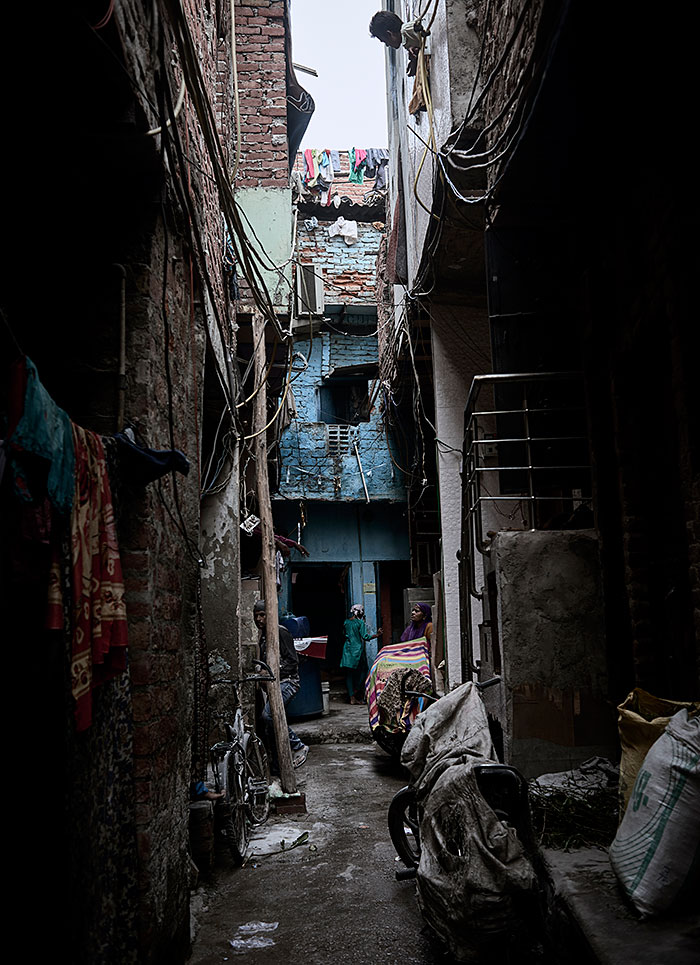
Jyoti’s Hindu parents, neither of whom was educated, privately criticise the decision, too. Khurshida Ansari, Aafreen’s young Muslim mother, also tried to persuade Bushra to stay in school, thinking of her own situation. Khurshida resents having to ask her husband for money, she says — he always puts her off — and she is ashamed of not being able to sign her own name at a bank.
“My parents used to think that if a girl gets educated she slips through your hands,” Khurshida says, nodding towards Aafreen. “But I’m looking at myself and I’m getting her educated.” Aafreen often implores her mother to stand up to her father, a dour-faced man whose bellows can be heard throughout the cramped colony when he gets angry. “How many times will you be beaten before you stop him?” Aafreen asked her once.
The idea of marriage fills Aafreen with dread. “I am scared. What if I get the same beating? I am miserable here. What if I am miserable there? My aunt told me you can’t know any of this in advance,” she says.
It is a concern echoed by Jyoti’s father, Billu Ram, a 60-year-old milkman who, despite his comparatively progressive views on girls’ education, is philosophical about the drawbacks. His three daughters all did well at school, he says. Jyoti’s eldest sister has an office job at a financial firm. The next, Meenu, has completed a bachelors degree and has a passion for embroidery. She is also waiting to be married. None of his three sons made it as far in school as the girls. Instead they help him raise and milk the buffaloes they keep — a back-breaking job that is more reminiscent of work in the village they came from than in the city where they now live.
“For a boy it’s different, but for a girl we have to consider the other house, too,” Ram says. “If we get them a job and the [husband’s] house doesn’t want them to work, then we have to think of that too.”
Main picture: Jyoti with her siblings in the yard of their home in Delhi © Poulomi Basu
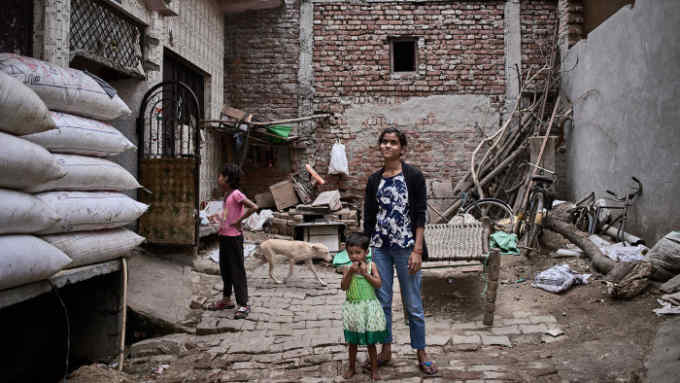
Comments